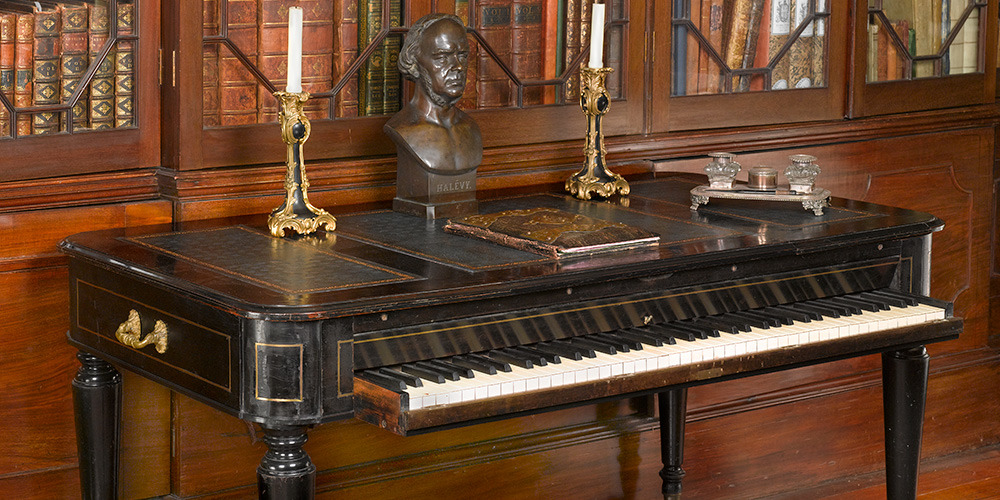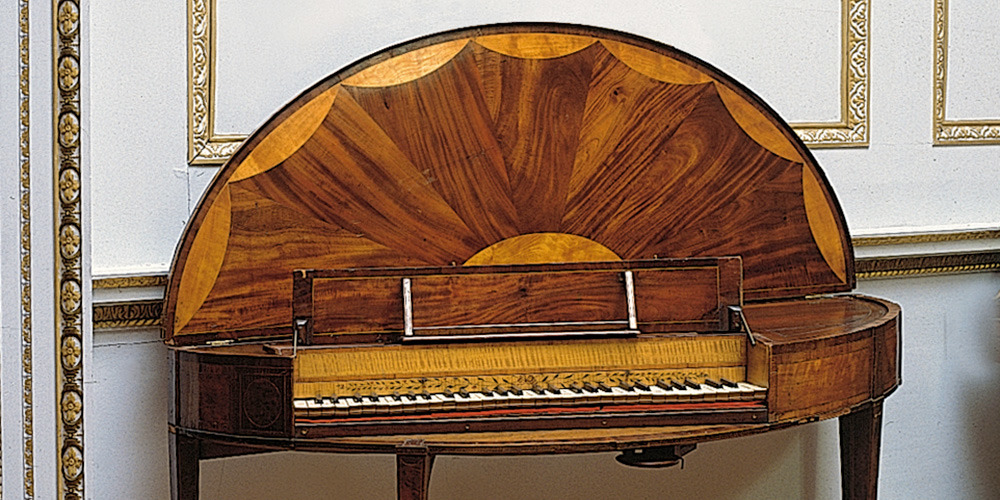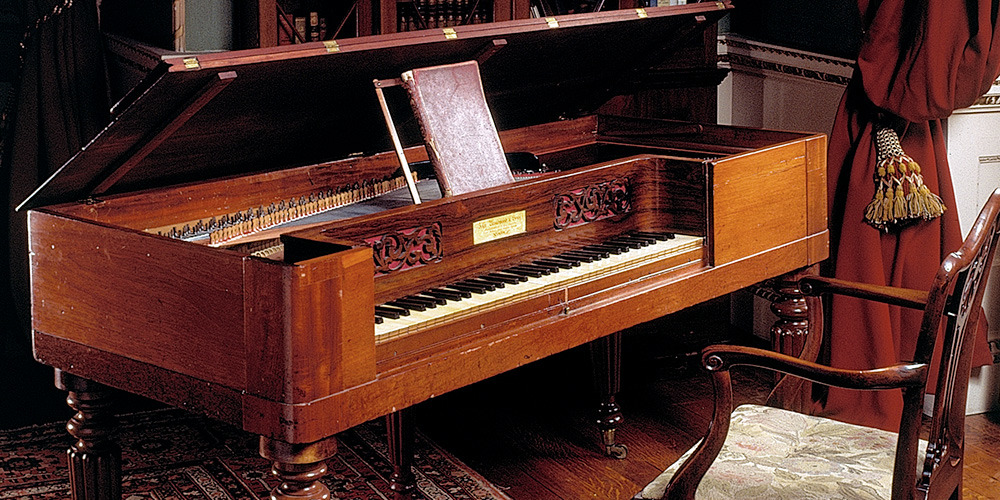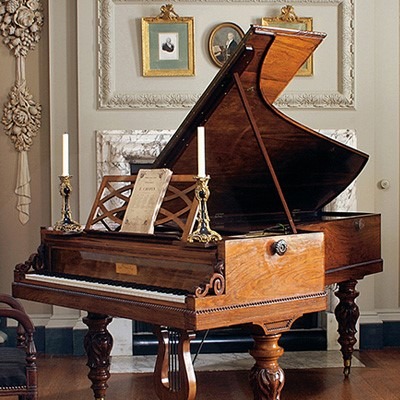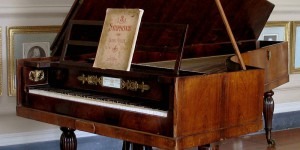
Mahler’s Graf piano
Why would there be an interest in a composer’s piano, mass produced and anonymous? It can tell us much about how a composer worked, for example, Mahler’s piano, even though he bought it second-hand, shows how he changed the hammer covers, adding strips of lead to the lower register, so that he could have a more percussive sound. More indicative, however, is that his piano works conform to the restrictions of the instrument. It had a small range of 6 ½ octaves (a modern piano is 7 octaves plus 4 keys (88 keys)) and, despite purchasing a newer piano, all of his piano music falls within the smaller range of his Graf, he wrote with his original piano in his mind.
Mahler – Leider Eines Fahrenden Gesellen, No. 4
Beyond pianos, the collection also includes organs and virginals. The virginal was the common keyboard instrument of the Renaissance and Baroque periods, particularly in England. The instrument in the collection was owned by King Charles II and the current owner notes that after 1672, the king’s keyboard instruments were tuned and maintained by the young Henry Purcell.
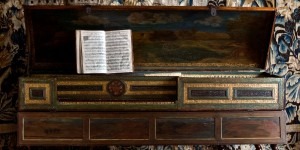
Charles II’s virginals
What’s unusual about this collection is the fact that all instruments are maintained in playing order – this isn’t a museum of formerly live objects, but a collection of living sounds. There are concerts on the instruments in the summer and autumn and other concerts held throughout the year.
We’ll look more at these instruments in detail in future pieces, but for now, make your summer plans to include some music as the composers who wrote it, heard it.
The Cobbe Collection

